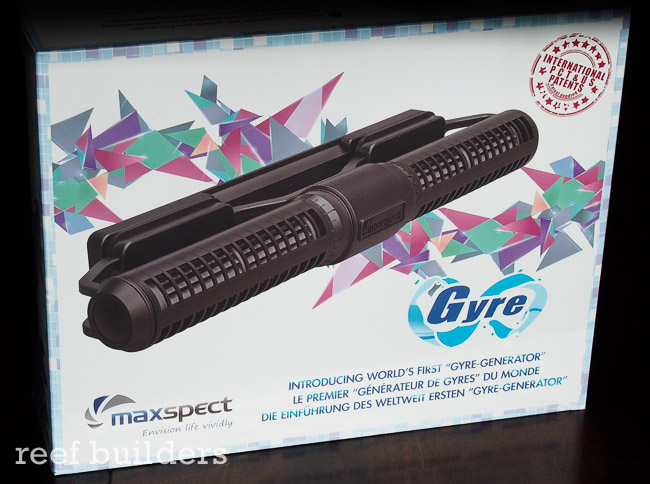The year is 2003 and I was just starting to delve into the first year of real marine science courses like ecology, oceanography, and fluid dynamics. At that time I’d already been keeping marine aquariums for 8 years and i was glad to be a part of a growing number of people who were very enthusiastic about reef aquariums, watching the reef hobby kind of explode in popularity around us. During those days the Tunze Stream pumps were just barely beginning to trickle into the marine aquarium trade and the Vortech pumps were a pie-in-the-sky prototype that a few college kids had shown off at a MACNA, once.
The conventional wisdom about water flow is that corals needed “random, chaotic, turbulent” water flow and most marine aquarists were trying to accomplish this using these things we called “powerheads” and turning them on and off rapidly using these other things we called “wavemakers”, but for some reason there were no waves to be seen. Additionally the old school reefer had been enjoying these clumsy flow oscillating machines called Sea Swirls for a while to try and direct their narrow jets of water to sweep every part of the reef and corals.

We knew that water flow is important for corals and the health of the reef but this random flow approach led to way too many powerheads in the aquarium, or way too many nozzles pointing every which way. Not only was this arrangement terrible to look at, it also didn’t create nearly the kind of water movement that I thought should be happening in an aquarium.
Back then I already found that this randomness of water flow that people were trying to create was wholly inefficient at really getting water moving in an aquarium. By that time I had already begun to experiment with a little concept that I called “Mass Water Movement” to create water flow throughout the entire aquarium. The idea was to get all of the water in an aquarium moving together so that inertia would help water flow build up to higher speeds and we therefore didn’t have to worry about sweeping every part of the aquarium with a direct jet of water.

Like an astronomer during the inquisitions of the church, I knew that what I was advocating was not just new and different, it went completely opposite to what conventional aquarium wisdom dictated about water flow, and I felt quite anxious about the “aquarium heresy” that I believed. Therefore I only told my closest reefer friends about my ideas and mostly kept the mass water movement concept to myself.

For the next two years I worked in a “Dynamic Ecomorphology” laboratory which studied all kinds of marine creatures relative to their environment, with my study animal being corals and I was obsessed with their relationship to water movement. I read every peer-reviewed, scientific paper about water flow in the marine environment I could get my hands on, I learned about measuring water flow and how all kinds of different sea creatures interact with their fluid environment, from fish, to corals, to algae and even sea stars.
Years spent in college diving in the deep end of everything I could learn about water movement, discussing with other marine scientists, and some experiments I undertook myself finally gave me the courage to “come public” with my ideas about producing mass water movement. After learning about global oceanic currents that are driven by conveyor belts of water called Gyres, I had been calling my idea about moving water in an an aquarium “Gyre Flow” since it was more accurately describing what I promoted, it was a replication of a natural phenomenon, and it was admittedly more catchy than “MWM”.
But I didn’t come out of the gyre flow closet with a simple forum post, no I committed to the cause of better water flow for all aquarium corals and I made the biggest splash possible. I first presented the results of my research and experiments at the International Marine Aquarium Conference in Chicago in 2005. I then followed up by writing my first real marine aquarium article in Advanced Aquarist, and I took no less than five parts to carefully explain my ideas about mass water movement, water flow speed, and the first formal explanation of gyre flow was introduced in January of 2007.

A long speaking tour of presenting on water flow, additional articles by myself and others have completely transformed the way we flow up our reef tanks. Today you’d be hard pressed to find a reef tank using jets from a powerhead for water movement, or to find an old school wave-timer for sale in any aquariums store. Propeller pumps have all but replaced centrifugal pumps as the primary mode of water movement in an aquarium but never in my wildest dreams did I ever imagine that a completely new type of device would be designed to recreate the exact kind of water motion I espoused, or that it would simply be called “The Gyre”.
I am speaking of course of the revolutionary new water moving device from MaxSpect that creates sheets of water moving together to really get the entire mass water moving in a shape aquarists now commonly call a gyre. I still like to investigate radical aquarium ideas like forgoing refugiums, reduced ecology reefing, and taking a critical stance on what porosity really does for our aquariums.
I may take some flack for going against the grain of what is “common knowledge” in aquarium literature and books, but the fun of reef keeping is trying new things and figuring out how to make aquariums better for reef life, and easier for aquarists. As I hold the MaxSpect Gyre, reviewing where best to place it to create mass water movement in my aquarium, I think of the long journey this concept took to become mainstream and I am encouraged in knowing that good ideas can gain traction when given enough time. 



